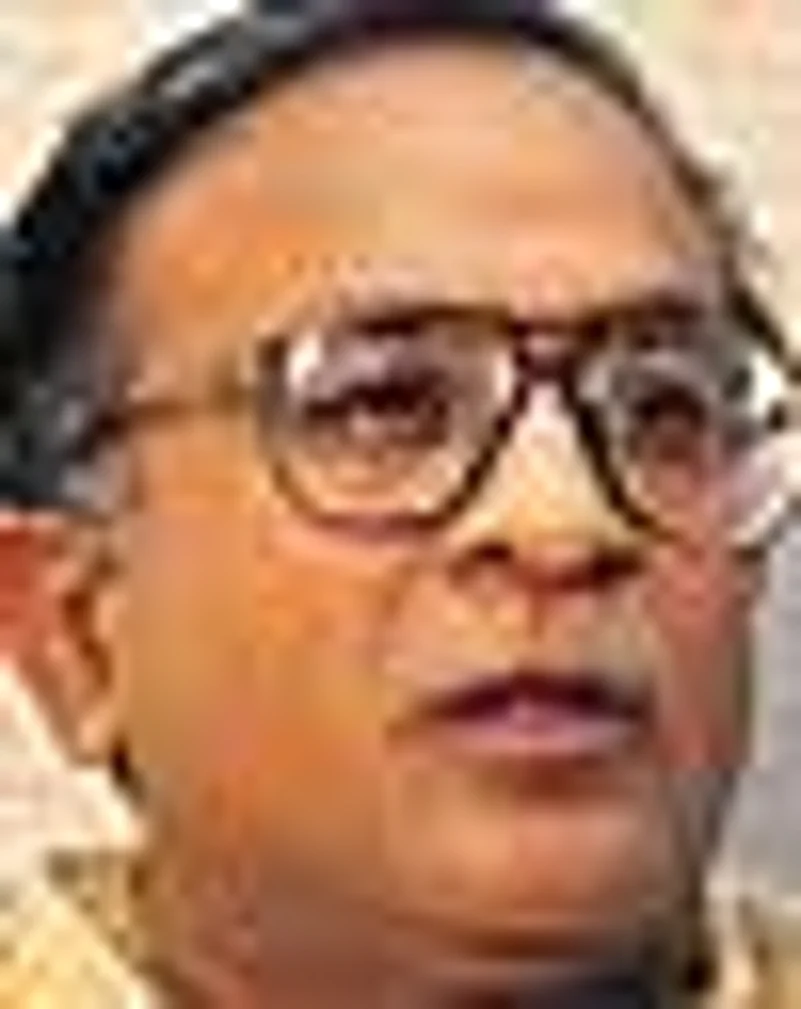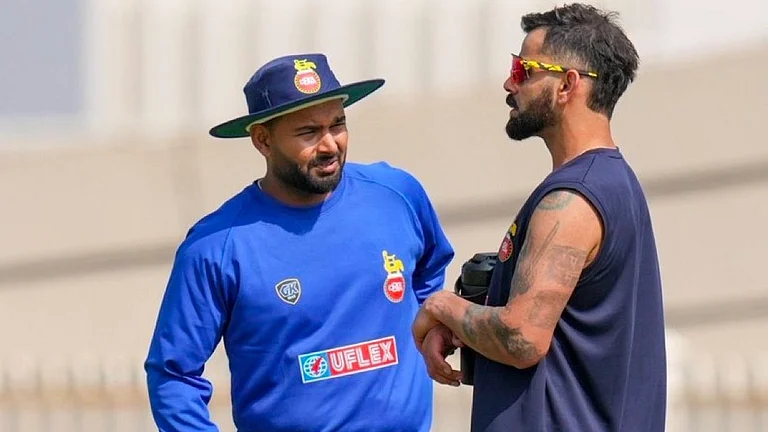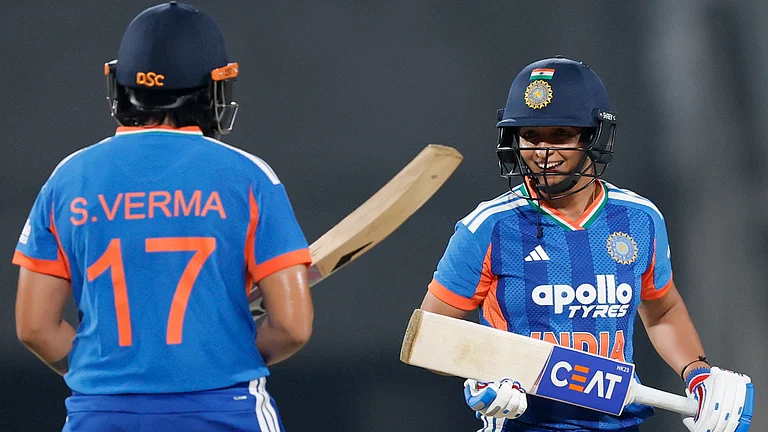
"I've nothing against sting operations. No one can be opposed to an investigation. But when it is used to invade privacy, the line is crossed."
Jaipal Rreddy, Former I&B minister

"As individuals, we feel slighted by those who are more powerful than us but there is no institutional redress. So, we want to see the powerful exposed."
Dipankar Gupta, Sociologist

"The media then was civilised, there were towering personalities in politics, many were very colourful. But no one violated their personal space."
Inder Malhotra, Journalist

"It's a fake paparazzi. It's an imitation. It's hard work in the West, to pursue celebs for weeks. Here, it is just peeping in on some painful reality."
Shiv Visvanathan, Social Scientist

"It would be unfair to say that people watch only sting operations. Everyone knew about the casting couch in Bollywood but no one would admit it."
Rajat Sharma, TV anchor

"You whack one pillar, I'll whack another, someone can hammer at the roof. I would call it demolition journalism. You can sell anything to the highest bidder."
B.G. Verghese, Journalist
***
For the past month, the power elite of Delhi has been only marginally interested in Bofors, Mr Q, Rahul Gandhi, the 57th Republic Day parade or who got invited to the state banquets held in honour of Saudi Arabia's visiting King Abdullah. But there's been a constant chatter about the taped "dirty conversations" of a well-known public figure. There are several versions of the tapes which allegedly include names of actresses and politicians for whom they were apparently procured.
Similarly, the infamous Sanjay Joshi CD continues to be in circulation. The two-hour-long tape shows a man who looks exactly like the former BJP general secretary and pracharak—sworn to upholding the great RSS tradition of celibacy—repeatedly having sex with a very willing woman. (Joshi has reportedly sworn by his gods that he has never indulged in the forbidden act). The first month of the new year concluded on a somewhat depressing note for the men in khaki shorts. They were successful in imposing a new president on the BJP, but it is their own cadre that continues with the whisper campaign that there are more CDs involving RSS leaders engaged in sexual acts considered criminal under the Indian Penal Code.

The talk in the political circles is getting filthier by the day. That's because new boundaries are being crossed, norms of privacy being breached. The hidden or secret camera is not just being used by the so-called sting journalists to expose corruption in the larger public interest. It is being used to titillate viewers and push up TV ratings by channels, by political opponents to settle scores, by con artists to blackmail and make a fast buck.
In his seminal work, Ways of Seeing, British art historian and social commentator John Berger says that the way we see things is affected by what we know or believe—"every image embodies a way of seeing". What does the overdose of sex, sleaze, celebrity and pulp in our media tell us about ourselves? Sociologist Dipankar Gupta points to the poor levels of institutionalisation in India as the root of the problem. "As individuals, we feel slighted by those who are more powerful than us but there is no institutional redress. Hence we get great satisfaction in seeing the powerful exposed." It is also worth exploring the sentiment such "exposes" tap in the target audience. For a brief moment, do we feel morally superior because someone else has been caught with their pants down? Or are we just a repressed people who are looking for any cheap thrill? A nation of cynics who have lost faith in everything, so anything goes?
Some observers may describe urban India as a schizophrenic nightmare. Barefoot beggar children selling Indian flags to swanky car-owners on a chilly Republic Day in the nation's capital. It is this sort of schism that creates a society where idealism is lost, ideologies forgotten and values eroded. That's why in the metros the sensational has long ago pushed out serious issues. The lurid has replaced the meaningful. Are we, therefore, becoming a nation of peeping Toms? Who find nothing degrading in the act of prurient prying through a keyhole. Do our numbed senses now need something really salacious for us to sit up and take notice? In our desire for a TV fix do we really care about the ethics of taping or tapping someone? Who cares about farmers who routinely commit suicide. Bring on the sleaze and sex, the riveting images of shifty-eyed men taking bribes or actors being caught propositioning women!
True, readers and audiences across the world get vicarious kicks from following the sexual exploits of celebrities. But the press in the West is segmented with different media catering for different sections of society. You have the News of the World and supermarket rags along with Playboy and Penthouse. But you also have serious newspapers and TV channels which actually report news. The problem in India is that the trivial has invaded the mainstream media, both print and television. In print, you have the page three phenomenon. In television, keyhole journalism is now being passed off as "exposes" with Breaking News in capital letters.
"It's much easier to be a peeping Tom than a professional journalist," says Gupta, adding that in the West stings do not make reputations for broadcasters. B.G. Verghese, former editor of the Hindustan Times, expresses "a deep sense of unease" about the media's priorities. "You whack one pillar, I'll whack another, someone can hammer at the roof. I would call it a demolition, outsourced journalism. I was willing to go along with the Tehelka expose though I would not have done it myself. But now it's become a regular routine. Anyone in the bazaar can sell anything to the highest bidder. It leaves one feeling uncomfortable that journalism can be outsourced to anyone with a hidden camera. That we are trivialising everything."

Tehelka in 2001 may have been the mother of all stings. But it was in the spring of 2005 that the sting became routine and really came into its own. It was then that the "casting couch" made the first connection with TRPs and TAM (television audience monitoring). India TV, launched by journalist Rajat Sharma, who has close links with the BJP-RSS, had just burst on to an already crowded scene. It got noticed when it showed an ageing actor propositioning a young girl. The channel's marketing team went on an overdrive a few hours before the actual telecast with a spate of frenzied smses asking people to watch what they always knew but had never seen. Those who cared to catch India TV on Sunday, March 13, saw a hazy video of a drunk Shakti Kapoor mouthing profanities and demanding sex in exchange for a role.
According to the data released by TAM for the Hindi-speaking market in the 15-plus age group, with the Shakti Kapoor episode, India TV managed to briefly beat market leader Aaj Tak by grabbing 22.4 per cent of the market share over the latter's 20.2 per cent. India TV was back to the fifth position two weeks after airing the episode, but not before it had hiked its advertising rates from Rs 500 for a 10-second commercial spot to Rs 800. Journalist and Rajya Sabha MP Chandan Mitra, also closely linked to the BJP, says: "I don't care who the journalists behind such exercises are. Secretly taping someone is unethical. I worry that it is a measure of the growing perversion of public taste that people actually seem to want more and more sting operations to be aired on television. Some channels have whetted people's libidinous appetites."

Defending India TV's brand of journalism, editor-in-chief Rajat Sharma says that sting does help to get viewers. "But it would be unfair to say that people watch only sting operations. Just as a magazine like yours at times resorts to sex surveys, it works for us to have some sting operations." But he insists he is also spurred by a social conscience. "Everyone knew about the casting couch in the film industry, but no one was willing to admit this on camera." He claims he got calls from grateful wives of film producers who said their husbands were coming back home on time, post-Shakti Kapoor.
The good deed done, Sharma and the India TV crew with their hidden cameras toil on. But what social cause was served when Bihar MLAs were shown having sex with call girls? Sharma says the "public interest" was to expose MLAs who demanded sex to award lucrative contracts. The bad news is that someone actually broadcast such crude and pornographic images. The good news is that hardly anyone saw the story as the channel did not go on a publicity overdrive.
But Congressman Jaipal Reddy, who was I&B minister at the time, says India TV was officially warned against showing such "prurient" images. "If a channel repeatedly crosses the line of decency, then its licence can be revoked. I have nothing against sting operations which are no more than a visual investigation. No one can in principle be opposed to an investigation. But when it is used to invade privacy, the line is crossed. The media has to exercise self-restraint. Otherwise individuals whose privacy is violated should sue."
India TV seems to have led the way, but other channels too are hot in their pursuit of sensational news. In an increasingly competitive world, sting has become an acceptable part of all channels' armoury. In some cases the results seem to be positive. Aaj Tak bankrolled Operation Duryodhan conducted by Aniruddha Bahal of Tehelka fame where MPs were caught accepting cash on camera for raising questions in Parliament. The channel's share went up from 28.1 per cent on December 11 to 32.8 per cent on December 12, the date on which the expose was telecast.

Point is, the exposes have multiplied, like a rash. A week after Operation Duryodhan, Star News broadcast Operation Chakravyuh—exposing MPs taking bribes in selecting the projects for their local area development fund. Star News head Uday Shankar says "it is a misconception shared by people who have been stung that television channels resort to sting operations to boost their viewership. Issues of corruption in public office have to be highlighted and get their share of time on television." Rajdeep Sardesai, editor-in chief of the newly launched CNN-IBN, says their priority is to cover news as accurately as possible. "Such exposes should be resorted to only when you can't carry a legitimate investigation. Events should be seen in a context, not in an episodic manner," he says.
Yet, it appears that sting is becoming something of a craze for many wannabe journalists. The latest Bollywood buzz is that Priyanka Chopra is to act in a film inspired by sting journalism. Journalist Manoj Raghuvanshi's media school Pratyaksha in Delhi has just taught its first batch of students the tricks of the trade. "The great competition in the market means that stings are now inevitable. We are only preparing our students well," he says.

Many old-timers, however, have little respect for this new-age media. Says columnist Inder Malhotra, "There is a free-for-all in the media today. Some newspapers are consumed by page three while TV channels appeal to the lowest common denominator." Malhotra says that when he entered the profession in 1949, India was in an age of innocence. "The media was civilised, there were towering personalities in politics and no one ever dreamt of violating their personal space although there were many colourful individuals," he says. But over the years our respect for politicians waned. The mushrooming of TV channels meant that the profession was no longer seen as a mission; it was now a cut-throat business where everyone was chasing the holy grail of the "breaking news" story. Malhotra says the "grab all and anything" culture can be traced to globalisation and the opening up of the economy. "The great excuse is that the reader wants it, the younger generation wants it. Hence we have to appeal to the lowest common denominator," he says, adding "I have not lost hope. Once the novelty wears off, people will switch off. For every page three story, they are now having to carry a serious report."
Media analyst Sudheesh Pachauri says there is a hunger for news across the country. The big channels cater only to the four metros. "Small towns have their papers which are read from cover to cover. In the Hindi sector there is 10 per cent growth for newspapers. Serious news is read carefully. Demand for journalists everywhere has increased." The point he makes is that it is the media which caters to the big metros that is particularly guilty of dumbing down news because it is easier to report a salacious titbit than cover a serious story. "Sting journalism is a sign of the failure of the media. It is hard to tell whether a sting is natural or manufactured," he says.
This trend is only part of a larger process of voyeurism in which the public is often a willing participant. Recently, a man invited cameras into his bedroom because he claimed his wife regularly beat him. Viewers tuned in and Star News faithfully broadcast Mujhe Meri Biwi Se Bachao. Was this news or puerile peeping? Sociologist Shiv Visvanathan says "the question is not whether you are trivialising news. I would say news is often equally trivia. The sad part is that you are now trivialising pain." Does India then have its own paparazzi now? "It's a fake paparazzi. An imitation. It's hard work in the West where they pursue celebrities for weeks. Here you just peep in or turn your camera on some painful reality."
The 15-minutes-of-fame phenomenon took a grisly turn last week when a small Patiala trader invited cameras to watch him immolate himself in protest against the municipality's decision to shift some stalls, including his. The man's son was standing by with a blanket to put out the flames; he inadvertently fanned them. The man died of 90 per cent burns. All the news channels broadcast his gruesome death on prime-time. The unreported part of the story, perhaps, is that the poor man would not have doused himself with kerosene and set himself alight if he did not think it would be captured on camera. Again, we, the voyeurs, watched.
Saba Naqvi Bhaumik And Anuradha Raman
























